Homemade lasagne pasta sheets (lasagna)
Everybody loves a good baked lasagna (lasagne al forno to the Italians). And, here on The Pasta Project there is a growing number of delicious baked lasagna recipes (yes there are different ways to make it!). However, making lasagne al forno with homemade lasagne pasta is pretty unbeatable!
(Scroll down for recipe)
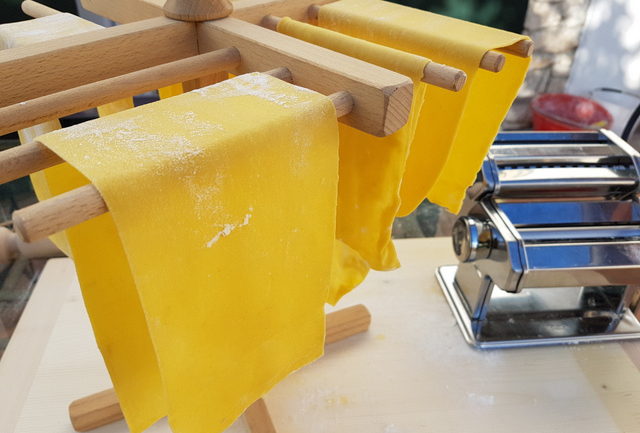
Baked lasagna around Italy.
Baked lasagna is a classic dish in most Italian regions. However, the recipe varies from region to region. In Northern Italy, they make it with fresh or dried egg pasta. Usually, the other ingredients are a classic Bolognese sauce or meat ragu, Parmigiano Reggiano or grana cheese and bechamel .
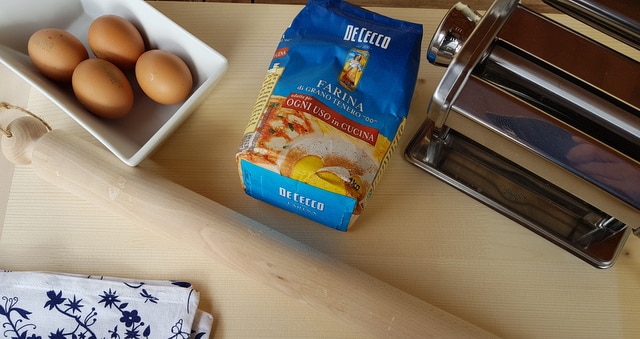
In Emilia-Romagna, they often use green lasagne pasta sheets, made with spinach. A great favourite of mine for baked lasagna from Emilia-Romagna is baked pasta roses or swallow’s nests (nidi di rodine) (see link below). In this dish, the lasagne sheets are rolled with ham and cheese and sometimes other ingredients inside them and then baked covered in bechamel. I have made this recipe with homemade lasagne and boy is it good!
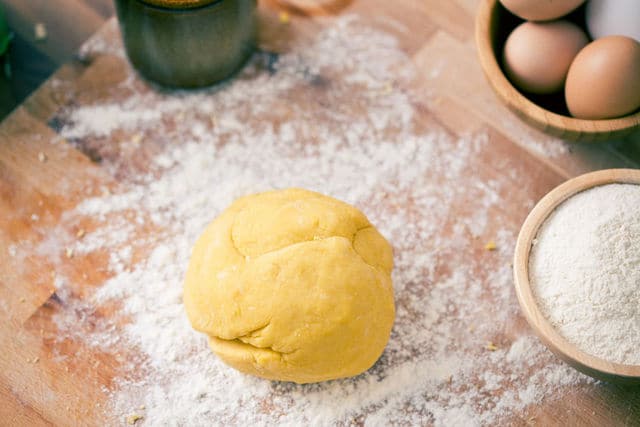
In Naples, Neapolitan lasagna, a typical carnival dish, is prepared with Neapolitan ragu, meatballs, cow’s ricotta, provola and pecorino cheese. Interestingly, the lasagne in the south is often dried and made without egg.
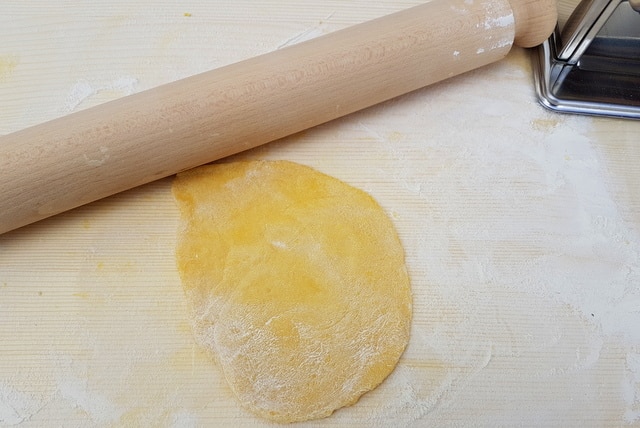
In some Italian mountain areas, they substitute the ragu or meat sauce with mushrooms. Whereas, they sometimes use pesto instead of ragu in Liguria, and in Veneto, red radicchio from Treviso.
In Umbria and in Marche, there is a particular version called ‘vincisgrassi’ in which the ragu is enriched with chicken or pork offal. In the Apennines, the ragu is replaced by a filling of porcini, truffles and pecorino and in Sicily, there is also the ‘alla Norma’ version with eggplants. Or, they add boiled eggs to the dish.
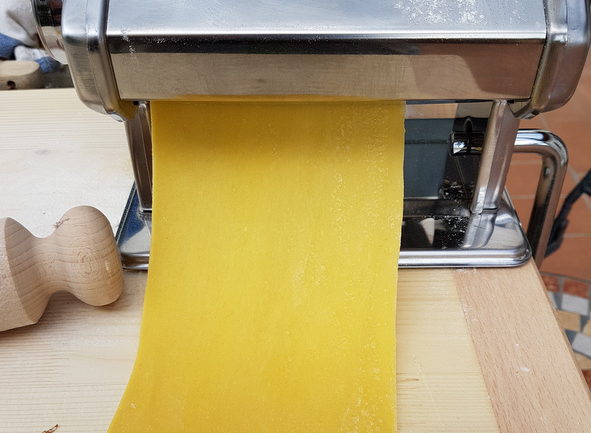
Lasagna bianca.
Not all Italian recipes for ‘lasagne al forno’ contain tomatoes. In fact, there are many ‘white’ recipes too. Italians say 'lasagna bianca'. A ‘white’ lasagna I particularly love comes from Puglia. It’s made with mushrooms and burrata (see link below). Believe me when I say, it’s amazingly delicious. Plus, there’s no meat included, perfect for vegetarians too!
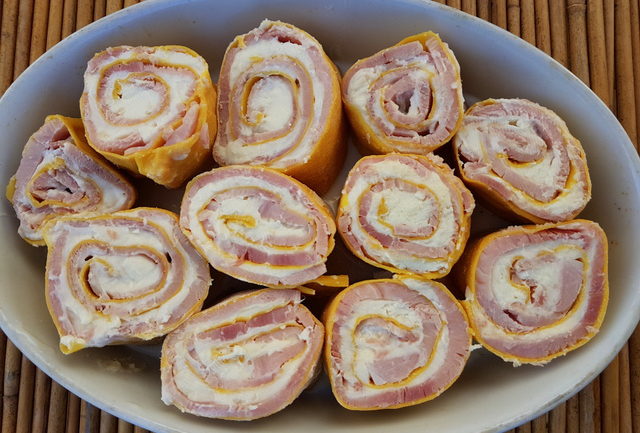
Here in Northern Italy, people also call these dishes (red and white) ‘pasticcio’. However, although pasticcio has layers of pasta with various fillings baked in the oven, it isn’t always with lasagne sheets.
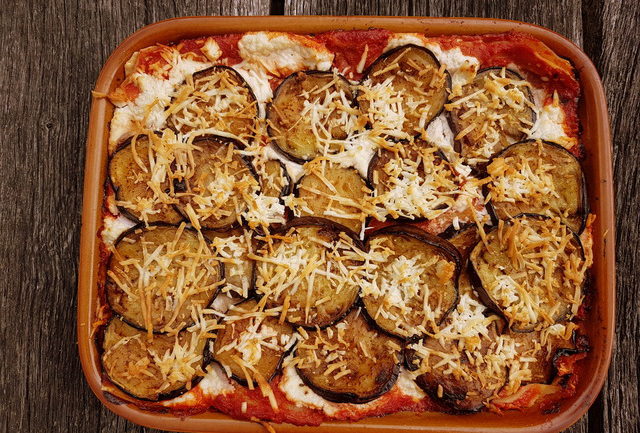
Making homemade lasagne pasta is easy!
Fresh lasagne sheets are available to buy throughout Italy. But, the absolute best is homemade lasagne. It’s actually pretty easy to make, with or without a pasta machine. Why not give it a try next time you want to make a baked lasagna? I’m sure once you’ve done it, you’ll want to do it again and again! There really is quite a difference in the taste of homemade pasta and store bought, even if the latter is fresh!
Do you need to precook fresh lasagne?
When making your baked lasagna dish you can either precook the pasta for a couple of minutes in boiling salted water before assembling the dish or use it raw. In the latter case, the sauce needs to be a little more liquidy. I usually don't precook fresh pasta.
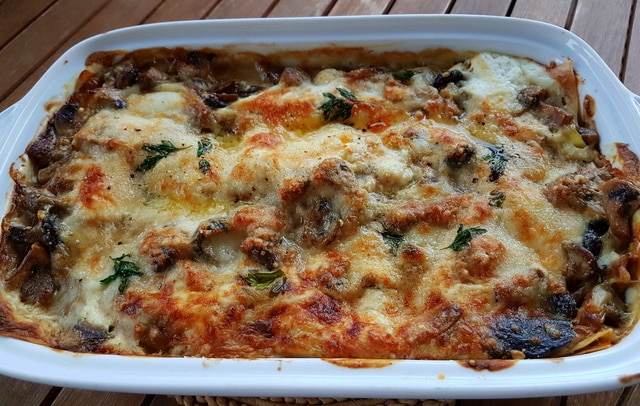
If you do try making your own homemade lasagne, I’d love to hear how it turns out. Please, write a comment here on the blog or post a comment on the Pasta Project Facebook page.
Your feedback means a lot to me!
Buon Appetito!
Recipes on The Pasta Project for your homemade lasagne pasta.
(just click on the name of the recipe to go to that page)
- Lasagne al forno with Bolognese from Emilia-Romagna
- Radicchio pasticcio (Italian chicory lasagna) from Veneto
- Baked lasagna alla Norma from Sicily
- Baked pasta roses from Emilia-Romagna
- Lasagna bianca with mushrooms and burrata from Puglia
- Italian lamb lasagna
- Poached salmon and asparagus lasagna
- Lasagna baked in broth from Molise
Want to read more about my life in Italy? Go to the homepage and subscribe to my newsletter. New subscribers get a free recipe e-book too! https://www.the-pasta-project.com
Save this recipe for later?
If you want to save this recipe for later, you can print it, bookmark this page or save it to Pinterest.
Pin for Later
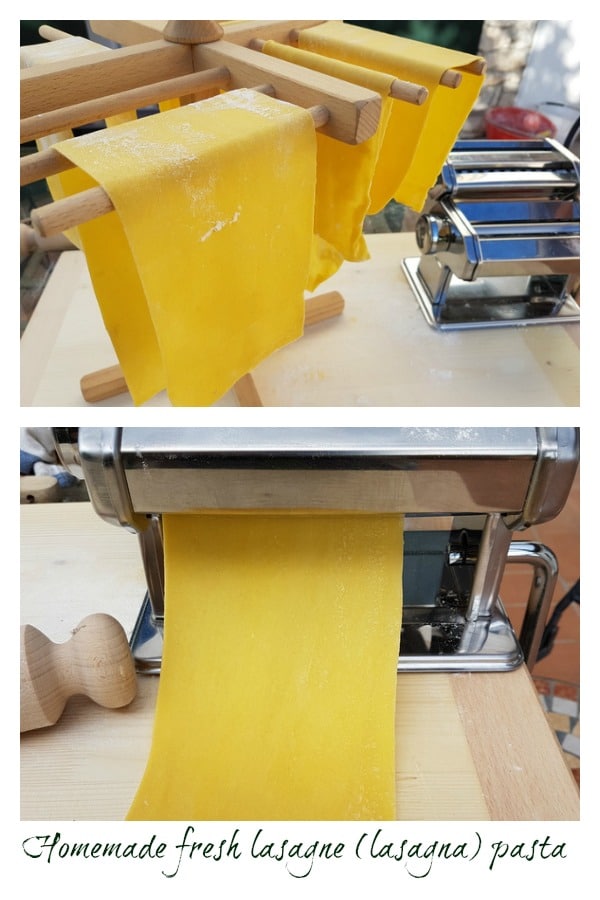
New recipes for homemade pasta sheets you will love.
I've just posted (March 27th 2020) a great recipe for homemade pasta sheets that you should check out! Baked fazzoletti from Abruzzo
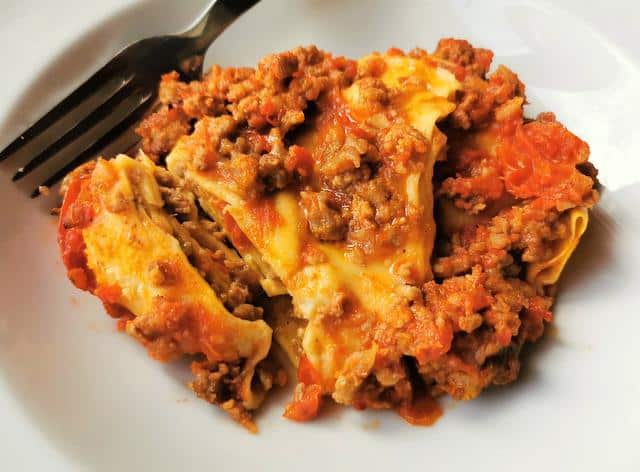
Also worth trying is this recipe from Liguria for silk handkerchief pasta squares with pesto. Just cut your pasta sheets into squares instead of rectangles! Silk handkerchief pasta with pesto.
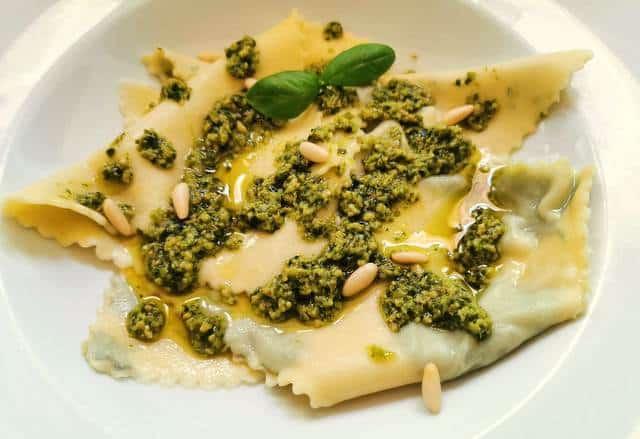
DO YOU WANT TO LEARN PASTA MAKING ONLINE FROM ITALIANS?
I recently enrolled in a great online pasta making course to help me learn how to make some homemade pasta shapes I haven’t yet tried. This course is great! It’s designed by two lovely Italian ladies who have a company that specializes in food and wine tours in Rome. There are lots of step by step videos and you can go at your own pace. Click the link and let me know what you think if you enroll! The Local Aromas Pasta Making Course
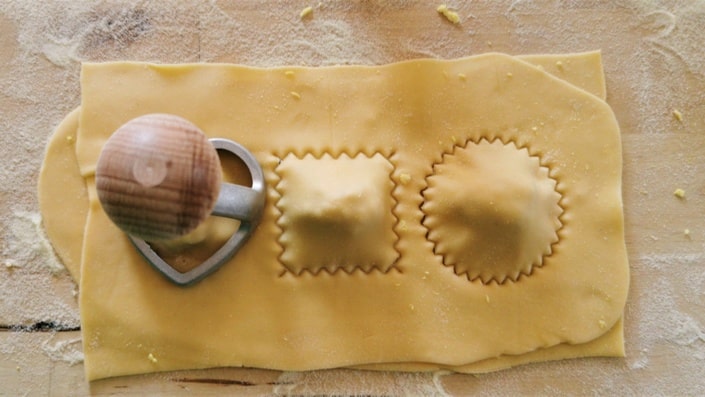
The above is an affiliate link so I will actually get commission if you subscribe through me. However the price is the same and that bit of commission helps me cover the costs of my blog. I most definitely never recommend any product that I haven’t tried myself so you can rest assured that if I say this online course is great, I really think that!
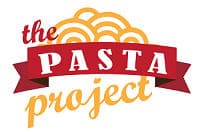

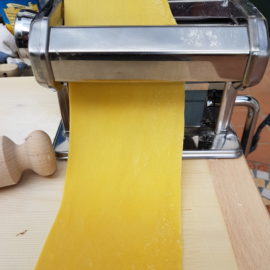



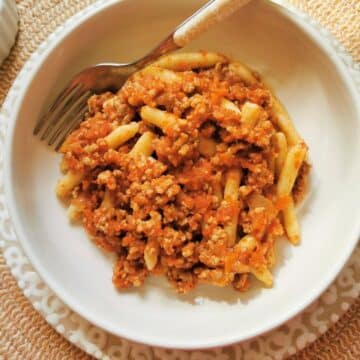
Isabel says
I’m afraid if I roll the dough too thinly, it will disappear in the layers of the lasagna. How thick can I roll the dough and still make a good lasagna?
Jacqui says
Hi Isabel, thanks for your question. It's hard to give actual measurements for the thickness of lasagne dough sheets. However, I usually roll mine thin enough to just see my fingers through. I don't preboil them but make sure the sauce is a little liquid. It's important not to overcook the lasagna and not to forget that it will need to stand for about 5-10 minutes before cutting and serving. The pasta continues to cook during this time. Do let me know how it turns out.
CZ says
Naturally, mine did not come out as symmetrical as is in your pictures, but I pulled it off! Once the lasagna noodles were layered with bolognese and béchamel, nobody noticed they weren't perfectly rectangular — they were too absorbed in enjoying the flavors. Great instructions! Great project! Thank you for sharing your expertise and research.
Cheryl says
Hi, I’m going to try this for New Year’s Day dinner. 2 questions, can I use a stand mixer (I know hand I’d probably preferred, but I have limited time) next question can I make this dough a day or 2 in advance? Thanks
Jacqui says
Hi Cheryl, thanks for your questions. I only received them at 9pm yesterday (New Year's Eve in Italy) but yes you can use a stand mixer to make the dough and it's possible to make the dough the day before as long as it's kept well wrapped in clingfilm so it doesn't dry out. I wouldn't make it 2 days before but you can freeze it instead and then bring to room temperature when ready to use. Happy New Year from Verona.
Cheryl says
Amazing thanks happy New Year!
Angela says
Can't wait to try this! Question for you: what pasta machine do you recommend for a beginner/basic pasta making?
Jacqui says
Hi Angela, thanks for your question. I have a very simple basic manual machine for rolling out pasta sheets. I use it for all kinds of egg pasta shapes from lasagne to types of ravioli. The most popular make outside Italy is Atlas Marcato. Italians like the Imperia brand. Mine is made by Ernesto, another Italian brand. So any of those should be fine for you. I make the dough by hand but of course there are machines for that but I'm not sure which are the best.
Rossana says
great recipe and instructions! I've tried it twice and it was delicious. I roll the sheets with a pasta machine. any idea why my edges keep coming out freyed?
Jacqui says
Hi Rossana, thanks for your comment. I'm happy this homemade lasagne recipe has been a success for you! Re the frayed edges, I think either the dough sheeet is too wide for the machine or the machine has a problem. Check that there's no dough stuck in the sides of the roller. Do let me know if you solve the problem. Merry Christmas from Verona.
Jon F says
Hello Jacqui,
What is the best and proper way to store dried lasagne noodles if I make them ahead of time? I am planing on using your recipe for a holiday dinner and want to prep in advance. I will write back on the success of the noodles once I make them. Thank you.
Jacqui says
Hi Jon, thanks for your question. I'm happy to hear you are planning to make lasagne for the holidays. Personally I usually use my fresh sheets within an hour or two of making them. There are different ways to store homemade lasagne sheets. First dry them on a flat mesh tray so air can circulate or a well floured table, tea towel or normal tray . Make sure they are in a cool dry place. Humidity will spoil them. Once dried you can place them one on top of another with some baking paper between each sheet, wrap them in a tea towel keep in a cool dry place until ready to use. Once dried, handle with care as if the sheets are thin, they can break easily. Whereas homemade egg pasta is made with soft wheat flour, ready dried pasta is made with hard wheat flour which makes it more robust.
Gord Power says
Hi Jacqui
Will you recipe produce enough pasta for a 3 layer lasagna in a 9 x 14 pan. I use a Mercato Atlas 150 pasta machine. Thanks
Jacqui says
Hi Gord, thanks for your comment. Yes this recipe should make enough pasta sheets for the lasagna you want. Of course, it depends on how thin you make the sheets but you should be able to make plenty for that size.
Joelle says
I used the Mercato Atlas 150 and rolled the dough to #7. Came out perfect! I had enough sheets for 3 layers of pasta in a 10x15 pan, plus enough extra to make another smaller lasagna.
Jacqui says
Happy to hear your pasta came out well, Joelle. I'm sure your lasagna was delish. making it with homemade pasta sheets is the best!
Walter says
Hi Jacqui,
Thanks for the recipe!
I've decided I'll be making this and adding it to the lasagna without pre-boiling (will make sure it's saucy!). I wanted to ask: how long do you usually bake your lasagna for?
Lasagna recipes in the internet vary wildly, from as little as 15 min to almost an hour! There's no point in making wonderful fresh lasagna pasta if I then serve it raw or too mushy! Can you give us an idea of how long you'd bake it in the oven?
Grazi
Jacqui says
Hi Walter, thanks for your comment. As per my recipe for a classic lasagna with Bolognese https://www.the-pasta-project.com/lasagne-al-forno-with-bolognese, I usually cook it for about 30 minutes if using fresh sheets or par-boiled dried sheets. However, the time can depend on the thickness of your pasta, the number of layers in the dish and your oven! I doubt it would be ready in less than 30 minutes but I suggest you check it at around 25 minutes to see if the pasta is cooked. Lasagna needs to sit for 5-10 minutes before cutting and serving and the pasta will also continue to cook during that time.
Alex says
Hello!
I've made lasagna sheets from scratch a few times now and I've recently done your recipe, but it has always come out very pliable/delicate and stretchy? I feel like it should be firmer so I'm not sure what I keep doing wrong. Any advice?
Jacqui says
Hi Alex, thanks for your comment. Fresh pasta is usually quite soft and pliable. It becomes firmer as it drys but you can make lasagna or other dishes with the pasta whilst it's still soft. Just cook it for less time so it doesn't get mushy.
Dami says
I'm excited to make some pasta sheets. I have a pasta roller. Do you think it's possible to successfully join the approx. 4" rolled sheets to make a larger sheet for pinwheel lasagna? I'm thinking of joining the sheets with slightly dampened edges and perhaps hand rolling them to "glue" them and thin out the joint. Clear as mud?
Jacqui says
Hi Dami, thanks for your comment. Since you are planning to make pinwheels I think joining two sheets of pasta as you described would work. When I want larger sheets I actually either roll the dough out on a pastry board with a rolling pin, without using the roller, and then cut to the size I want. Or, I roll thicker sheets through the machine and then roll them out more using a rolling pin. You could try those methods too!
Dami says
Thanks for your quick response, Jacqui.
Diane says
I am making a meat lasagna for Christmas and would like to make it in advance. Would it be ok to make my fresh lasagna noodles with my Kitchenaid attachment, assemble the lasagna using cold meat and sauce and then refrigerate uncooked for 2 days? I would remove from fridge and let it come to room temperature before baking on Christmas day. Also, what rack position, oven temperature and how long do you recommend baking for a large , dense lasagna?
Jacqui says
Thanks for your comment Diane, To be honest, I've never prepared a homemade lasagna 2 days in advance but I would assume it's possible. I know Italians who do that. It's important that everything is cold.
tdchinges says
Thanks for the recipe, I also learned to make lasagna pasta today
Angie says
I found the dough too stiff with only the eggs supplying the liquid portion of the recipe. I also have arthritic hands and use a bread machine for kneading. It was too stiff for the machine to knead. Hope it did not ruin it.
Jacqui says
Hi Angie, thanks for your comment. It’s difficult to know why your dough was so stiff. 1 egg for every 100g (3.5oz) of flour is the standard ratio for fresh pasta here in Italy, although some types of egg pasta also have some wine or oil in the dough. Perhaps your eggs were small? or the type of flour different to Italian ’00’ soft wheat flour which is what Italian mostly use? I hope your lasagne turned out okay.
Dennis says
I just made this recipe with 200 gms. of flour and two large eggs using my (25 year old) bread maker and it has come out perfect.
Jacqui says
That's great to hear Dennis. I love that you used an old breadmaker to make the pasta dough! Such a good idea!
Annie Joetta says
I'm making this for the holidays. Please tell me if the leftovers of the lasagna be frozen???
Jacqui says
Hi Annie, thanks for your comment. If you are referring to leftover lasagna (the dish) yes it can be frozen, although personally I find frozen cooked pasta can be a little mushy when reheated. Having said that lots of people do freeze it. Leftover or extra lasagne sheets can also be frozen and used at a later date. Do let me know how your lasagna turns out. Happy holidays!
Carol says
how long do you let your lasagna sheets dry for before you can start to assemble the lasagna
Jacqui says
Hi Carol, there's no hard and fast rule about how long to dry lasagne sheets. I usually like to use them while they are still pretty fresh and soft as I don't like to precook them. So I make the pasta either just before making the other ingredients like the ragu or whilst the ragu is simmering. Then, when everything is ready I assemble and bake.
Bob O'Fee says
I love to make my own pasta--spaghetti, linguine tagliatelle, etc--the problem is that when I dry them on a rack they always crack and fall off. I can make them in nests; but I need flour to keep the nest from sticking. What thoughts have you on drying long spaghetti-like pasta?. Thank you.
Jacqui says
Hi Bob, thanks for your comment. I think the best way to dry homemade spaghetti is to lay the strands a little spread apart on a floured sheet of baking paper. Dried spaghetti is usually sold in long packets rather than nests. However, dried spaghetti doesn't have eggs and is made with semolina flour so it is less delicate than egg noodles.
Chrissy says
This is a pretty good recipe, but even though i used the same flour and salt measurements I ended up having to use 7 eggs and a tablespoon of water to make this come together enough to resemble a pasta dough
Jacqui says
Hi Chrissy, thanks for your comment. It's difficult to know why you needed so many eggs. 1 egg for every 100g (3.5oz) of flour is the standard ratio for fresh pasta here in Italy, although some types of egg pasta also have some wine or oil in the dough. Perhaps your eggs were small? or the type of flour different to Italian '00' soft wheat flour which is what Italian mostly use? Anyway I'm glad your lasagne turned out okay.